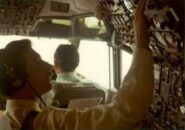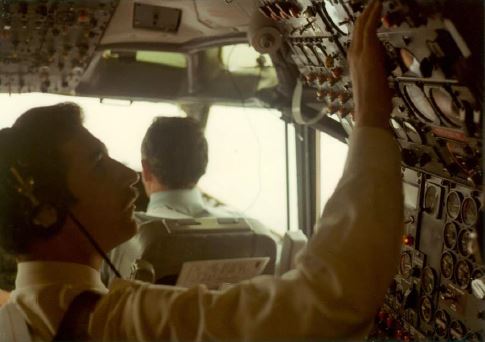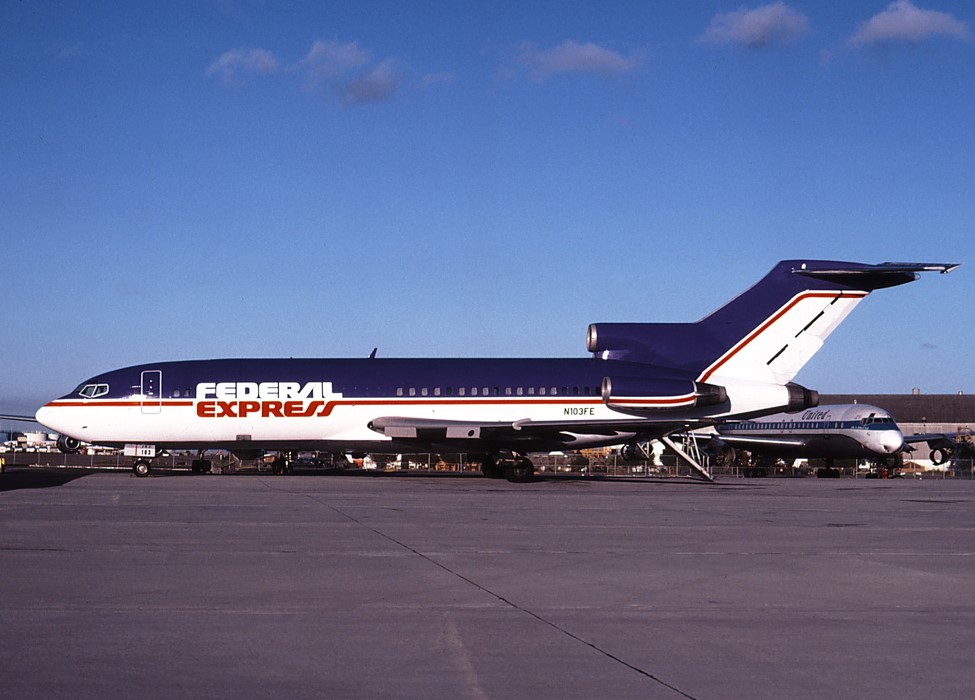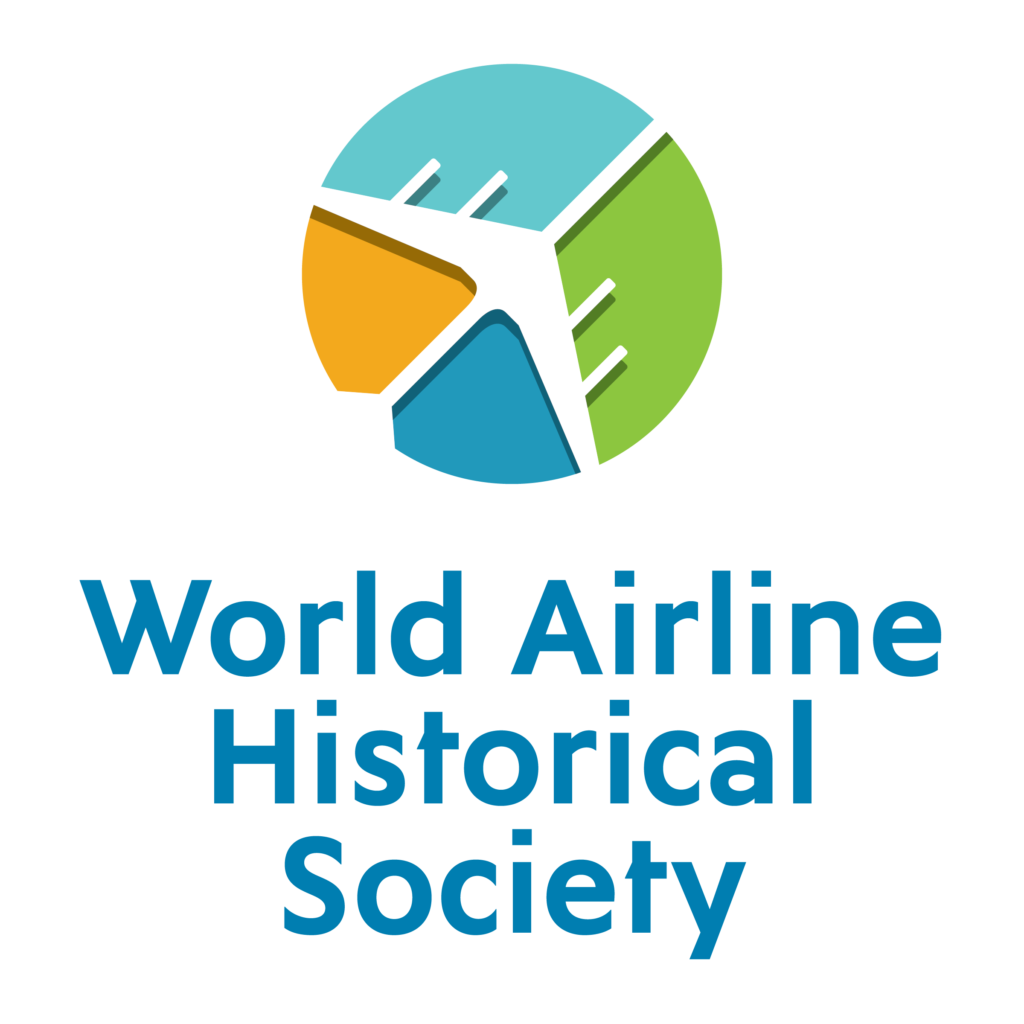Airline,airline pilot,airlines,Boeing 727,engineer,FAA,Federal Express,FedEx,flight engineer,pilot career,type rating

BOEING 727 – ROUND ONE
By Ellis M. Chernoff
Like all of my peers flying for small commuter airlines, we aspired to fly the big jets. Since about 1964, nearly all of the major U.S. airlines were flying fleets of the Boeing trijet. Serving as a second officer, or Flight Engineer, was the usual entry level for new hires. Very few airlines were hiring new pilots in the mid-1970s. To be competitive, at a minimum, an applicant must have passed the FAA Flight Engineer-Turbojet written exam. This exam was based on the Boeing 727 systems, limitations, and procedures. To be truly a standout applicant, a pilot needed to have the full FAA certificate. The airlines took advantage of the glut of potential applicants and expected pilots to purchase their own training rather than have the airline provide it upon employment.
Countless books and articles have been written on the history and characteristics of the classic Boeing. I need not repeat it here other than to say that I rode on my first one, a Northeast Airlines B727-95 from Montreal to Boston in 1967. My first jumpseat ride was on a United B727-22 from Charlotte on a multistop flight to Los Angeles in 1977.
Like most people, I prepared for the written exam with a study guide and attending a quickie weekend ground school. Only the very basics were explained, and many test question answers were pure rote memory.
By 1979, the airlines were finally hiring aggressively, and there was a rush to complete the full training and receive the certificate to land that coveted airline job. Since the course would be several weeks, it would not be possible to complete it on a vacation, so it was necessary to resign from one’s current employer. That came with the consolation that one’s dream airline job could be just weeks away!
So it was that I left Air Carolina and their fleet of Pipers and enrolled at Flight International in Atlanta. They operated a full school with classroom instruction, a cockpit procedures trainer (CPT), and a fully functional simulator based on the Delta Air Lines Boeing 727-232A version cockpit. It was a non-motion and non-visual simulator strictly for training flight engineers.
The classroom systems instructor really knew the plane, having retired from Pan Am on their Boeing 727s. The handouts and system boards were excellent for preparing for procedure practice in the CPT. This also built toward the required FAA oral examination. Finally, pairs of students were assigned to a “flight instructor” to learn to operate the systems in the normal, abnormal, and emergency procedures. I learned to know what every switch and gauge did and how to identify the results of every action.
Some procedures, such as Hydraulic Leak/Loss and Electrical Fire of Unknown Origin, were drilled again and again so the student flight engineer could isolate a fault in a system and restore as many functions as possible. Real system knowledge stuff. Strut overheat and Lower Aft Body Overheat were other classics drilled again and again.
Each student was scheduled for their closed-door oral exam with the FAA. This spread much anxiety as many guys did not pass or spent many hours being grilled and barely getting a pass. Not to brag, but when my turn came, the inspector gave me a performance problem first and then began the questions. In about 20 minutes, he asked a question I had never encountered before. He said, “I know they didn’t give this to you, but how do you think it works?” Before I could even answer, he told me I had the oral in the bag. I postulated an answer to his technical question, which was correct. We chatted for a few more minutes so it would not appear to the next guy that I had finished so quickly.
Since the simulator did not “fly”, it was necessary to do one more thing to finish up the exams. A Federal Express B727-22QC was rented in Memphis and six of us would go there and get 20 minutes each in the seat. Before the flight, we would receive a “differences“ training class and a walk-around preflight on the ramp. I would start an engine, run the after-start and before-takeoff procedures and checklists, the
pilots would fly once around the pattern, and after landing, I would restart the APU and do the after-landing procedures through an engine shutdown. The cost of this little ride worked out to $920.00 of the total tuition.


With another temporary FAA Airman certificate in hand, I could again start the process of applying to the airlines and hopefully land an airline job and start that long-planned for dream airline career. But that would not be how it turned out.
On May 25, 1979, American Airlines 191, a DC-10, took off from Chicago. The #1 engine detached from the wing, resulting in loss of control and a crash. All 271 occupants on board were killed on impact, along with two people on the ground. It remains the deadliest aviation accident to have occurred in the United States. The FAA subsequently grounded all DC-10s in service, resulting in nearly all airlines cancelling hiring and new hire training classes.
For now, my Flight Engineer-Turbojet certificate was useless paper in my wallet. Having given up my prior employment, I returned to my parents’ house and began again to look for any flying job I could get. Hopefully, I would get something where I could log turbine time. I already had plenty of PIC and Multiengine time. It seemed every interviewer would talk about what I didn’t have and not give me much credit for the experience and potential I did have.
For now, my Boeing 727 materials and knowledge would be stored away for another nine years.
Stand by for Round Two.
